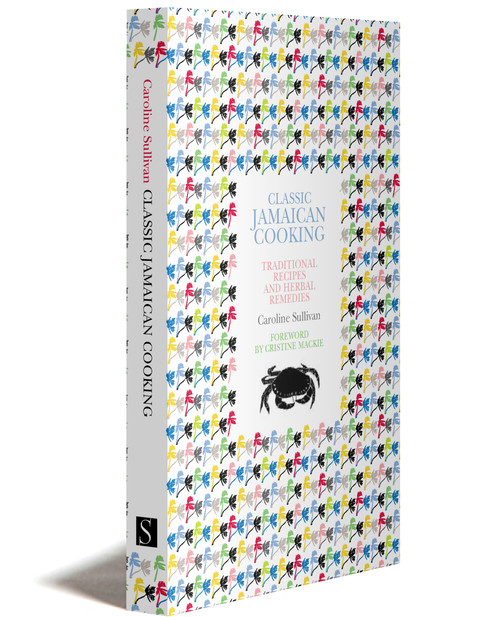Traditional Moroccan Cooking
“A jewel and an inspiration”
—Deborah Madison“A classic from which passion and enthusiasm come through on every page”
—Claudia Roden“Much, much more than a recipe book”
—The Timesabout the bookabout
Moroccan cuisine is famous for its subtle blending of spices, herbs and honey with meat and vegetables. In Fez, the nation's culinary heart, the cooking has numerous influences—Arab and Berber, with hints of Jewish, African and French. The country's classic dishes are couscous, tagines or stews, and bistilla, an exquisite pie made with a flaky pastry.
Capturing the atmosphere of Fez, cultural capital of the medieval Moorish world, Madame Guinaudeau takes us behind closed doors into the kitchens and dining rooms of the old city. She invites us to a banquet in a wealthy home, shopping in the spice market and to the potter's workshop, shares with us the secrets of preserving lemons for a tagine, shows us how to make Moroccan bread.
Traditional Moroccan Cooking is the perfect introduction to a mouth-watering culinary heritage and a vivid description of an ancient and beautiful city. It offers a taste of the delights to be found in one of the world's great gastronomic centres.
“Wafts off the page in scented waves”
—Daily Telegraph
“Successfully evokes the magic flavours of Fez”
—Nigel Slater
About The Author / Editor
Madame Guinaudeau, a Frenchwoman married to an eye specialist practising in Fez, lived for more than three decades from the 1930s in the city where she researched and wrote this book.
Claudia Roden, who was born and raised in Cairo, was educated in Paris and London. As she writes in her Foreword to Traditional Moroccan Cooking, when researching her seminal A Book of Middle Eastern Food, she was constantly referred to Madame Guinaudeau's classic book. The winner of no fewer than five Glenfiddich prizes, she is also the author of the highly acclaimed The Book of Jewish Food.
Preview
Couscous
This is the Moroccan national dish. It will be served to you at the end of a copious meal by your host anxious to saturate your already failing appetite and you will be incapable of tasting more than one or two mouthfuls. On the other hand, if invited informally by friends and sitting round the table you are given couscous, you can, with impunity, stuff yourself with this semolina, each grain separated from the other, so light, smooth and scented, and digested with incredible ease. You must take in your right hand a chickpea or a raisin with a handful of semolina, press and shape it carefully to form a small ball and an expert twist of the thumb should carry it to your mouth. As you will probably only succeed in besmearing yourself with grease it is better to ask for a spoon. But learn to appreciate the contrast between the softness of the raisins and the sharp burning of the peppery semolina.
Copyright © Madame Guinaudeau, 2007
Kefta
1 lb beef — choose fatty meat, if possible from the ribs
A small bunch of finely chopped coriander
A few coarsely chopped parsley leaves
A blade of sweet marjoram
Salt
A pinch of pepper
A good pinch of hot red soudania pepper
1 heaped teaspoon ras el hanout
1 teaspoon powdered cumin
1 finely chopped onion
Mince the meat very finely and put it in a bowl with the seasoning so that it is very heavily spiced. Mix carefully and leave to marinate. Take a little meat, enough to make a small ball the size of an egg, and pack it tightly around the skewer in the shape of a small sausage. Lay the keftas like this in twos and threes. Grill quickly, turning them often and serve very hot.
Copyright © Madame Guinaudeau, 2007
Tea
Tea-making is a gift of God, a gift that cannot be acquired. There are no proportions, no rules for making tea, no two glasses ever taste the same. The quality of the leaves is of an infinite variety — before the war I was told of more than sixty sorts. The quantity and quality of the mint, everything counts in this infusion. I will try to teach you to make this green tea in a way that I hope will be drinkable without presuming to reach the ultimate perfection where the scented mint brings to the bitterness of the tea its fresh and piquant flavour.
Copyright © Madame Guinaudeau, 2007
in the media
Traditional Moroccan Cooking
“A jewel and an inspiration”
—Deborah Madison“A classic from which passion and enthusiasm come through on every page”
—Claudia Roden“Much, much more than a recipe book”
—The Timesabout the bookabout
Moroccan cuisine is famous for its subtle blending of spices, herbs and honey with meat and vegetables. In Fez, the nation's culinary heart, the cooking has numerous influences—Arab and Berber, with hints of Jewish, African and French. The country's classic dishes are couscous, tagines or stews, and bistilla, an exquisite pie made with a flaky pastry.
Capturing the atmosphere of Fez, cultural capital of the medieval Moorish world, Madame Guinaudeau takes us behind closed doors into the kitchens and dining rooms of the old city. She invites us to a banquet in a wealthy home, shopping in the spice market and to the potter's workshop, shares with us the secrets of preserving lemons for a tagine, shows us how to make Moroccan bread.
Traditional Moroccan Cooking is the perfect introduction to a mouth-watering culinary heritage and a vivid description of an ancient and beautiful city. It offers a taste of the delights to be found in one of the world's great gastronomic centres.
“Wafts off the page in scented waves”
—Daily Telegraph
“Successfully evokes the magic flavours of Fez”
—Nigel Slater
About The Author / Editor
Madame Guinaudeau, a Frenchwoman married to an eye specialist practising in Fez, lived for more than three decades from the 1930s in the city where she researched and wrote this book.
Claudia Roden, who was born and raised in Cairo, was educated in Paris and London. As she writes in her Foreword to Traditional Moroccan Cooking, when researching her seminal A Book of Middle Eastern Food, she was constantly referred to Madame Guinaudeau's classic book. The winner of no fewer than five Glenfiddich prizes, she is also the author of the highly acclaimed The Book of Jewish Food.
Preview
Couscous
This is the Moroccan national dish. It will be served to you at the end of a copious meal by your host anxious to saturate your already failing appetite and you will be incapable of tasting more than one or two mouthfuls. On the other hand, if invited informally by friends and sitting round the table you are given couscous, you can, with impunity, stuff yourself with this semolina, each grain separated from the other, so light, smooth and scented, and digested with incredible ease. You must take in your right hand a chickpea or a raisin with a handful of semolina, press and shape it carefully to form a small ball and an expert twist of the thumb should carry it to your mouth. As you will probably only succeed in besmearing yourself with grease it is better to ask for a spoon. But learn to appreciate the contrast between the softness of the raisins and the sharp burning of the peppery semolina.
Copyright © Madame Guinaudeau, 2007
Kefta
1 lb beef — choose fatty meat, if possible from the ribs
A small bunch of finely chopped coriander
A few coarsely chopped parsley leaves
A blade of sweet marjoram
Salt
A pinch of pepper
A good pinch of hot red soudania pepper
1 heaped teaspoon ras el hanout
1 teaspoon powdered cumin
1 finely chopped onion
Mince the meat very finely and put it in a bowl with the seasoning so that it is very heavily spiced. Mix carefully and leave to marinate. Take a little meat, enough to make a small ball the size of an egg, and pack it tightly around the skewer in the shape of a small sausage. Lay the keftas like this in twos and threes. Grill quickly, turning them often and serve very hot.
Copyright © Madame Guinaudeau, 2007
Tea
Tea-making is a gift of God, a gift that cannot be acquired. There are no proportions, no rules for making tea, no two glasses ever taste the same. The quality of the leaves is of an infinite variety — before the war I was told of more than sixty sorts. The quantity and quality of the mint, everything counts in this infusion. I will try to teach you to make this green tea in a way that I hope will be drinkable without presuming to reach the ultimate perfection where the scented mint brings to the bitterness of the tea its fresh and piquant flavour.
Copyright © Madame Guinaudeau, 2007






